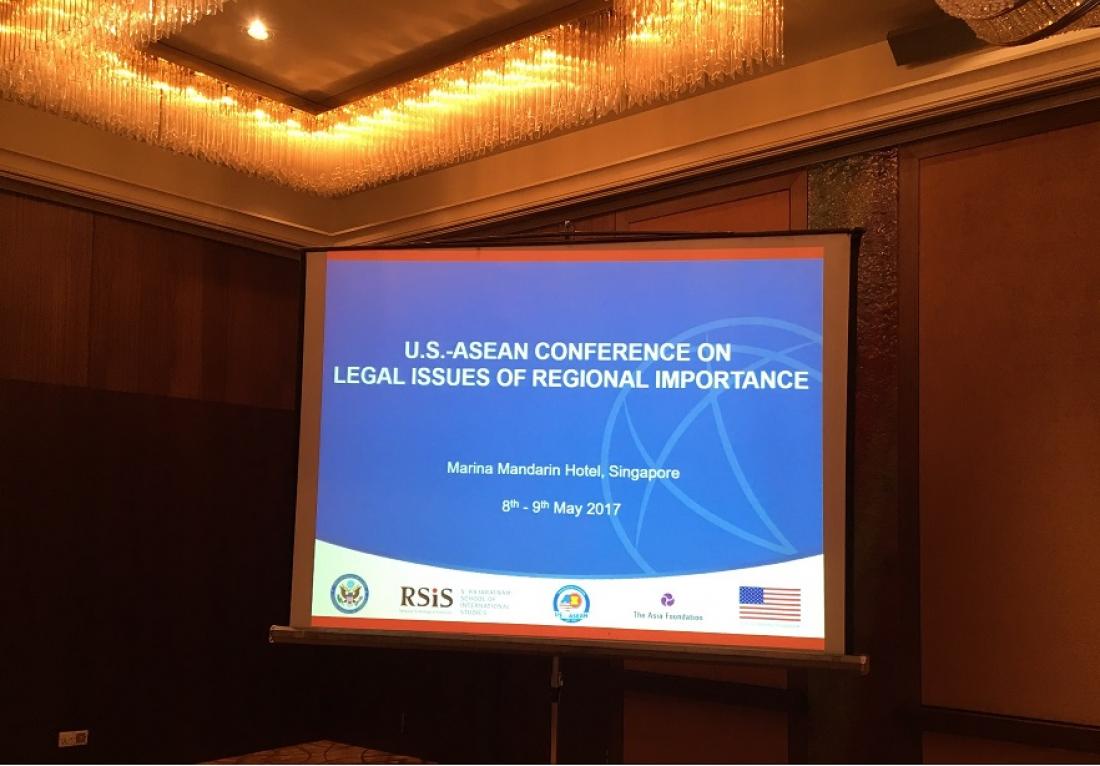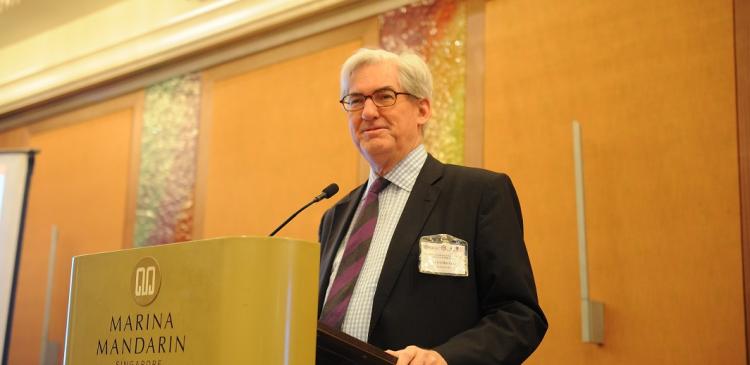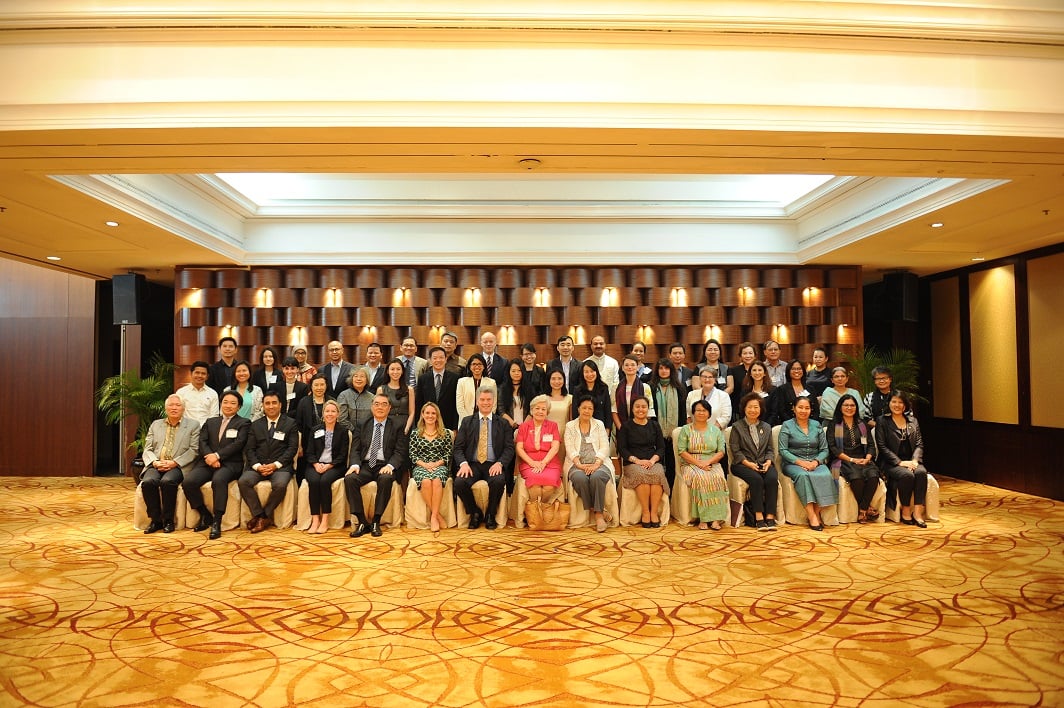U.S.-ASEAN Conference on Legal Issues of Regional Importance was held in Marina Mandarin Hotel, Singapore from 8-9 May 2017.
The recent U.S.-ASEAN Conference on Legal Issues of Regional Importance, which was held in Singapore and co-organized by the Asia Foundation and the S. Rajaratnam School of International Studies with the collaboration of the U.S. Embassy in Singapore, discussed the commitment of ASEAN Member States in addressing common legal and regulatory challenges to ASEAN integration based on various issues such as environment, human trafficking, labor migration and cyber-security.
The introduction of ASEAN Charter a decade ago is a turning point for this 50-year old regional organization. Various initiatives and efforts have been made, particularly the establishment of the three pillars of ASEAN Community. ASEAN has become part of the regional development whenever Southeast Asia is mentioned. The recent concluded ASEAN Summit in Manila has paid much attention to issues such as the South China Sea dispute, however ASEAN has a much broader agenda such as the issues of labor migration and human trafficking in the region, which mainly are cross-borders and need urgent attention.
Five decades have passed, but ASEAN has always focus more on security considerations and diplomacy rather than law. The regional grouping’s legal framework remains weak. Sovereignty concerns and the resistance to accept interference in domestic affairs are most often said to have contributed to a pattern of cooperation based on compromise and consensus, and in which hard legalization is generally avoided. It has been argued that the ASEAN Way of emphasizing on compromise through formal and informal meetings often conflicts with the grouping’s move towards deepening regional integration.
Throughout ASEAN’s history, the ASEAN Member States have consistently placed national interests ahead of regional interests. The Charter envisages legal and institutional frameworks for the region and for this first time ever; such framework was brought to the forefront of ASEAN discourse. But, the inspiration of the Charter is still quite distant from the ASEAN people. There is an inclination among the ASEAN Member States to opt for soft law instruments comparing the hard law. Soft laws are preferred for various reasons. For example, most states are cautious about what they commit to; moreover there is also doubt on the competency of some member states to fulfil the terms of the agreement.
Given the member states’ preference to their respective national legal traditions, attempts to harmonize legal framework is a real challenge for the region. However in a region where the regional trade is unavoidable and skyrocketing, ASEAN is being pushed to become more legalized in order to have a coherent and cohesive community. Contemporary challenges such as the changes to the regional and international political environments, emerging non-traditional threats, increasing influence from the external actors and civil pressure push the regional grouping to some degree, the need to rethink its legalization process in its mechanisms.
After 50 years of the existence of ASEAN, the choice of legalization remains a strategic calculation and based on the logic of relative gain. The obligations undertaken were seldom binding and were often loose. It is not to dismiss the argument that hard law itself does not necessarily increase states’ willingness to comply with what it has signed or ratified. While there is no straightforward way to tell if a legal instrument could actually bring about stronger implementation, enforcement, monitoring and reviewing mechanisms, legal certainty is an indispensable element.
Contact details:
Dr. Khoo Ying Hooi
Department of International and Strategic Studies,
Faculty of Arts and Social Sciences,
University of Malaya, 50603 Kuala Lumpur, Malaysia
email: [email protected]





